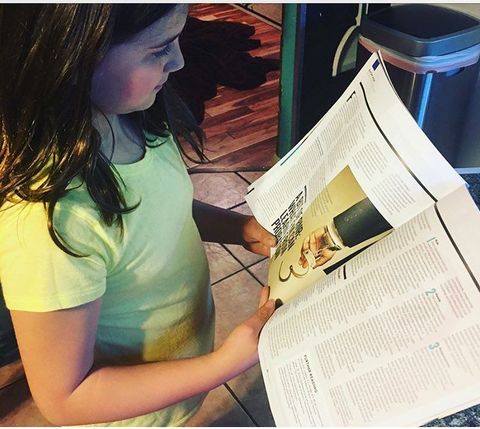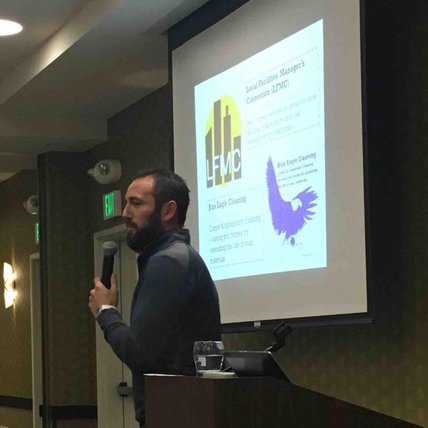 Door to door versus email... Door to door versus email... Originally published as Three Keys to Successfully Approaching New Clients Through Email, November, 22, 2016 in Restoration & Remediation Magazine (R&R). By Jon Isaacson All businesses need new clients, restoration most certainly included. Even the most basic research allows you to identify potentially valuable future customers, and draft a list of prospects. If the prospects are of as much value as anticipated, then the team must understand, appreciate and honor the etiquette of good business approaches and the gatekeeper to those clients. Paul Buccheit, the creator and lead developer of Gmail, expresses the sanctity of email, “Only my phone number and email are private because I don't want random people calling me. But I like the ability to share everything.” Who is the gatekeeper? In the modern economy the gatekeeper, or first line of defense, for clients of value is their email. Approaching a potential client through email can either be perceived as an invasion of privacy or a respectful approach that honors business boundaries, depending on how the content is composed. The drafting of an email will either allow admittance into the outer courtyard or expel you into the moat of oblivion. Thankfully, the keys to honoring the modern gatekeeper when approaching new clients are rather simple. 1) Subject Line "People often decide whether to open an email based on the subject line," business coach Barbara Pachter says. "Choose one that lets readers know you are addressing their concerns or business issues." (Smith, 2016) The subject line should be concise and answer the question whether there is value for the targeted client to open this email or pass this failed attempt at communication through to junk mail (the moat). Junk mail is the default setting for most email from unknown sources, as well as emails that are clearly a solicitation. So, if you are approaching people through email, you must recognize that email is the invitation, not the drawn-out conversation. Your subject line is the extending of your hand and your body language transmitted through however many characters you utilize in this important electronic transmission. An effective posture when composing a subject line will be respectful of time by providing a brief value proposition without being kitschy. The goal of the subject line introduction is to get the email opened. 2) First Paragraph “It’s better to say nothing than spend 1000 words or an hour speech saying nothing. Get to the point – fast.” Richard Branson If the email is opened, congratulations, the careful efforts have made it through the first line of defense and the relationship is past the initial cyber handshake in approaching a potential client. Any day that emails are not added to the hundreds of efforts banished to junk/block is a good day. If emails to prospects are introductions and the introduction is received, it is appropriate to follow up. Don’t ruin the good favor that the well thought subject line has created by now backing a dump truck of information upon the prospect. Remember the current advancement is only into the outer courtyard, not yet within the castle walls. Continue with the theme of the subject line and maintain respect for time, be brief and expound on the value proposition to the client, then ask for the opportunity to discuss further. This is the elevator pitch as the client has opened the outer gate but will discontinue the interaction just as quickly if there is an inability to connect. 3) Follow Up Director of Marketing for The Muse, Elliot Bell encourages, “Remember: If someone does ask you to stop following up, stop following up. But until you hear that, it’s your responsibility to keep trying.” Research, care and respect have advanced the efforts to this point and now it’s time for appropriate follow up with respect to the correct etiquette. This email is meant to ensure the client received the original email and determine whether they would like to discuss the content further. A follow up call or email should be brief and respectful, with a personalized addendum to the value proposition from prior email. When a call is made, there is an inherent request to venture further into personal space as well as asking for additional time, so the same principles applied in previous stages are as essential. The purpose of follow up is to answer for both parties whether there is value in moving forward with this potential business interaction. All clients have value and in the modern economy email serves as a gatekeeper when approaching prospects. Being brief, concise and respectful when composing a value proposition will enable greater success in introducing oneself through email. As noted in a previous article entitled Marketing Step One, good business practitioners are always looking to create opportunities to show potential clients how their organization can serve specific needs. Each step in the process of meeting new clients is about breaking down barriers rather than storming the gates in one fell swoop. All individuals are unique so it is important to listen through the process and learn from successful as well as unsuccessful approaches to new clients. For a personal example of how the author was able to initiate and build a networking resource for local clients in an underserved market, read How To Network With Local Facility Management Peers posted on FacilityExecutive.com. Many of the invitations that lead to ongoing business relationships that built Local Facilities Manager’s Connection (LFMC) were initiated through emails using the principles outlined in the source article above. References: Smith, Jacquelyn (2016, February 1) 15 email-etiquette rules every professional should know.Business Insider. Retrieved from http://www.businessinsider.com/email-etiquette-rules-every-professional-needs-to-know-2016-1/#1-include-a-clear-direct-subject-line-1 Bell, Elliot. Pleasantly persistent: 5 rules for effectively following up.The Muse. Retrieved from https://www.themuse.com/advice/pleasantly-persistent-5-rules-for-effectively-following-up
0 Comments
 Always be learning, author's daughter reads article published in FM World Mag Always be learning, author's daughter reads article published in FM World Mag In any profession it is essential that local professionals work to achieve The Three C's - connect, collaborate and conquer. We are stronger together and no one knows that better than either those who are connected with a caring community of like minded professionals or those who are pulling their hair out trying to figure it all out on their own. Through founding and facilitating the Eugene, Oregon based Local Facilities Manager's Connection (LFMC) we have had the pleasure of connecting with local professionals, collaborating with industry leaders such as FM World / BIFM (see article) and working to combine these resources to conquer in our respective roles. Take a peek at this article published in the FM World Magazine in April of 2017 which grabs some lessons learned as well as best practices from criminal justice and applies those to facilities management - A Bit of RNR: What FM Can Learn From Probation.  Jon Isaacson published in FM World Jon Isaacson published in FM World Serving as director for our local peer to peer networking group for facilities, maintenance and risk professionals has allowed some exposure to the resources and publications in those industries. I had an article published in print late 2016 for a industry leading facilities publication, FM World. The article tilted Powerful Points For Your Next Presentation covers getting buy-in for projects as a professional whether you are presenting to internal executives or networking with external groups. As facilities managers, we all are in sales - marketing our facilities values, creating buy-in for our preventative maintenance budgets and developing collaboration for our management vision. This is true of professionals in all industries at all levels in their organizations. In our modern markets, developing our soft skills as professionals is as important as our technical proficiency. Those who have responsibilities in the arenas of facilities, maintenance and risk may find value in Local Facilities Manager's Connection (LFMC) which meets monthly in the Eugene / Springfield, Oregon area.  Speaking at Lane ROA on insurance claims process Speaking at Lane ROA on insurance claims process Three key questions when filing an insurance claim from the perspective of an emergency service responder with over 15 years assisting property owner's recover from water and fire related damages. By Jon Isaacson Investment property owners know what it means to make sounds decisions based upon information gathered from trusted professionals combined with the experiences acquired over a lifetime. Having the knowledge base to make a smart decision is key when you are attempting to maintain value, address current issues and keep a long term perspective. The insurance process can be cumbersome at times as it seems to be riddled with red tape and key words that trap policy holders into the nebulous world of rejected claims. Enclosed are three key questions that will assist you to make decisions on how to proceed with your next insurance related loss. We will primarily discuss water damages in the following scenarios as the bulk of homeowner related insurance claims are water related. Claims Question #1 - Is this a covered loss or peril? Another way to think of this is whether the source of the loss/peril is specifically excluded in your insurance policy. Most plumbing related water sources are included by standard policies which would cover plumbing leaks, pipe breaks, overflows and the like. A water heater that is rusted out at the base because of age or lack of maintenance could be a source for coverage concern. Seepage from ground water or flooding from a catastrophic event could be a source for rejection and/or concern if you do not have additional coverage for these items. Talk to your insurance agent and make sure you understand the fine print of what is and what is not covered in your policy. Is this source/peril covered under my policy? If the answer is yes, proceed to Question 2. Claims Question #2 - Was this sudden and accidental? A common loss that is typically covered would be a scenario where the homeowner, or a tenant, returns home and finds that a plumbing line has burst and water is streaming through the structure right out the front door. Interior plumbing breaks are most often covered and the loss classifies as sudden and accidental, most likely this would be a covered loss. Where water damage from a covered peril can become a bit of a grey area occurs when there is a small leak that has caused damage over an extended period of time, indicators such as extensive discoloration, microbial growth (the four letter word – mold) and/or dry rot could be a source for concern. A refrigerator supply line leaking behind the unit may not be noticed by a homeowner or a tenant until there is significant damage to the structure and flooring. While the extent of the damages were not exacerbated by the tenant or homeowner being negligent (they did not know about the loss) yet the evidence will show that the damages have been occurring outside of what would be considered “sudden and accidental.” During the claims process the stakeholders will work to determine the source of the damage as well as the estimated duration of the loss. Is the loss sudden and accidental? If the answer is yes, proceed to Question 3. Claims Question #3 - What is my deductible? Most homeowner deductibles are $500 - $1,000 with many carriers transitioning to a 1% of value related policy (which can be much more than $1,000 on modern homes). As a landlord you may have a commercial policy with a greater deductible. An insurance deductible is the amount you as a policy holder have agreed to pay out of pocket in the instance that you file a claim. A water damage loss that is approved by the carrier as a claim will encompass two parts – first is the mitigation portion which will include the assessment of the extent of damages, removal of affected materials and utilization of drying equipment; second is the repairs portion which will include restoring the affected areas to their pre-loss conditions with materials of like kind and quality. Even if the loss is from a covered peril and was confirmed as sudden and accidental, depending on the extent of the damages and the estimated cost, it may not be in the insured’s best interest to always file a claim. Having an understanding of the extent of damages and the estimated cost for mitigation and repairs are important factors in making decision whether to move forward with filing and insurance claim. In life we don’t always need to know the answer to every question, but knowing what questions to ask and who can help us find answers are critical tools for survival. Investment properties are a source of pride for you as an owner, protect your assets by surrounding yourself with the information you need to make smart decisions. Keep in touch with trusted partners such as your insurance agent, local contractors and your fellow property owners through networking groups like Eugene, Oregon's Lane County Rental Owner's Association (ROA) so that when disaster strikes you are prepared to respond in a manner that will produce the best outcome for yourself, your tenant and your property. *This article was originally written for an published in the Lane County Rental Owner's Association February 2017 monthly publication. |
AuthorThoughts on personal and professional development. Jon Isaacson, The Intentional Restorer, is a contractor, author, and host of The DYOJO Podcast. The goal of The DYOJO is to help growth-minded restoration professionals shorten their DANG learning curve for personal and professional development. You can watch The DYOJO Podcast on YouTube on Thursdays or listen on your favorite podcast platform.
Archives
March 2023
Categories
All
<script type="text/javascript" src="//downloads.mailchimp.com/js/signup-forms/popup/unique-methods/embed.js" data-dojo-config="usePlainJson: true, isDebug: false"></script><script type="text/javascript">window.dojoRequire(["mojo/signup-forms/Loader"], function(L) { L.start({"baseUrl":"mc.us5.list-manage.com","uuid":"b9016446bd3c6a9f0bd835d4e","lid":"83282ffb9e","uniqueMethods":true}) })</script>
|
Jon Isaacson |
Connect. Collaborate. Conquer.
© COPYRIGHT 2015. ALL RIGHTS RESERVED.
|



 RSS Feed
RSS Feed